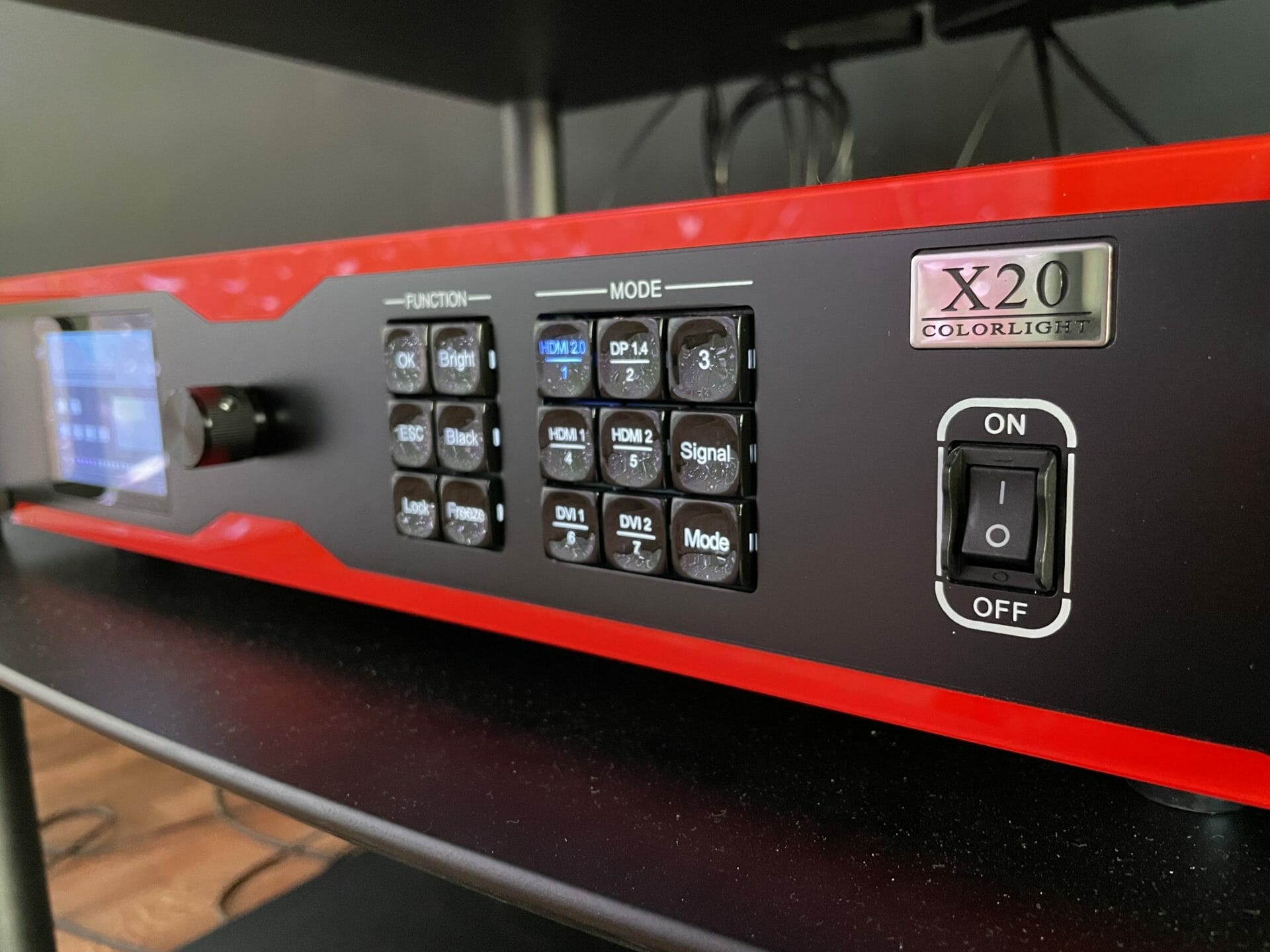Before investing in a larger digital video wall you should know the difference between LED and TV wall displays. The truth is, there are pros and cons to both — they each provide a high-definition picture, but work a little differently depending on the placement and primary usage. Although LCD has been a front runner of TV wall displays in the past, LED technology has quickly gained the top spot for many reasons. Here is a guide to knowing the difference.
What’s the difference between LCD/LED TV Walls and True LED Video Technology?
To cover the basic functionality, let’s quickly cover what LCD and LED even mean.
LCD, or Liquid Crystal Display, have a layer of liquid held between two pieces of polarized glass. The LCD display does not produce its own light, lighting comes from behind the screen from fluorescent lamps and shines through the glass to illuminate. LED, or Light Emitting Diode, also features a liquid display, but the backlighting is produced by Light Emitting Diodes — not fluorescent lamps. This provides a more consistent brightness, but still relies on the LCD to provide the image. Multiple monitors are stitched together to form an overall larger display.
LED at Work
See How Purdue University Used LED in Their Brand Studio
True LED Video Technology utilizes the actual LED Diode to produce not only light, but the imagery as well. As you get closer to the display, you can see these individual Light Emitting Diodes. The distance between the Light Emitting Diodes is referred to as pixel pitch. With the advancement in LED Video Technology in recent years, you can now utilize it in areas that typically only a TV Wall would have worked. It has always been the go to technology for outdoor or brightly lit applications.
Breaking down the benefits
Not only can LED wall displays replace TV Walls, but they reap many more benefits than the LCD/LED options.
Cost & Efficiency
Some might argue that LCD wall displays are cheaper to purchase upfront, which is true, however LED panels can last nearly twice as long as LCD. LED walls consume less power, so if you’re looking for a more energy-efficient solution then it’s a no-brainer especially in higher education and retail environments.
In further comparison, LED panels very light weight and thinner than LCD displays, which allows for an easier installation, handling, and transportation. If you go with an LCD display, installation and any maintenance would have to be done by a certified technician. LED, on the other hand, is very user friendly and easy to maintain even by the end user or your local AV Partner.
Calibration & Consistency
Since TV Walls utilize LCD displays that are backlit by fluorescent lamps, they can sometimes be hard to calibrate correctly across a full display. Often times, with TV Walls, one screen could be brighter than the other, or have variances in color, grey scale, etc…, creating inconsistencies throughout the TV wall. In the end, this creates a poor, unreliable display for your business.
When you create an LED wall display, it’s very simple to calibrate between the LED panels, it is how the technology was designed to be used. The edge to edge light emitting diodes create a truly seamless display with no bezels. This means that you’ll find no black lines between LED panels, like you will with TV Walls.
Brightness & Viewing
There is no question, when you’re installing a new LED or TV wall display, the end goal is for it to be seen. Whether that’s for advertisements, high resolution content, or immersive digital experiences, every display must be seen in all conditions and environments.
With that said, LED wall displays are much brighter than LCD/LED TV Walls, and can create a much more accurate color display with higher contrast. With the high quality sending controllers used by Firefly LED, this produces a more beautiful picture overall, ensuring it will be seen clearly in any lighting condition.
Depending on where you’re installing this new digital wall, you’ll need to consider the usage and viewing distance. If it’s a large display in a corporate lobby where your viewers are much farther away, or if it’s a TV wall in a restaurant bar, and your users are quite a bit closer. The beauty of LED is no matter the distance or viewing angle, you can see the screen content great, but with LCD you lose the picture at certain distances or angles. Obviously with LED Video Screens choosing the right pixel pitch is extremely important, and with the ultra high resolutions available now, this is certainly achievable.
All of Firefly’s panels are made with state of the art LED components, and the latest advancements in LED Technology, providing a more superior product in all indoor and outdoor applications. Our products are of the highest quality, giving you a beautiful display that will last a very long time.
Unique Designs and Custom Displays
One of the really cool advancements in LED Video displays is that they allow you to design unique and custom displays. Everything from letters, shapes, logos, to domes or other unique designs. These displays can really set you apart or even create a much more immersive viewing experience. I truly think that if you are looking to really create that “wow factor”, this is one of the ways to do it, and you just cannot do this with traditional TV Walls.
LED vs LCD: The clear winner
So which is the right choice for your display?
If it is a smaller display and your viewers are very close, High Resolution LCD or LCD/LED Monitors are hard to beat, assuming it is the perfect environment. However for most applications today, we recommend going with a true LED Video Display option and you’ll reap the many long-term benefits that we have mentioned.
Contact us today to learn more about our LED video wall solutions.




